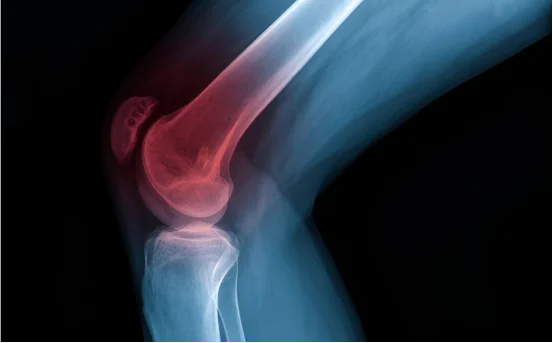This orthopedic procedure Meniscus Repair Surgery focuses specifically on repairing meniscus tears, which involve a crescent-shaped cartilage found in the knee joint. The meniscus functions to protect and cushion the knee joint between the thigh bone, known as the femur, and the shinbone, tibia. It facilitates smooth movement and serves as a shock absorber during locomotor activities like walking, running, and jumping.
Meniscus tears are widespread injuries, especially due to the increased likelihood of them occurring in athletes, the elderly, or people suffering from degenerative joint diseases. The painful and swollen meniscus leads to decreased mobility and meniscal damage that results in a tear. In most cases, meniscus repair surgery is performed to alleviate pain while preserving the remaining cartilage and enhancing functional mobility of the knee joint.
In the next sections, we will discuss in detail the underlying reasons for performing meniscus surgery, its causes, symptoms, diagnosis, treatment approaches, and expected recovery outcomes.
Why is Meniscus Repair Surgery Necessary?
Tears in the meniscus can be quite painful, and some types are unable to fully heal without surgical intervention. If not treated appropriately, a meniscal tear may result in chronic knee pain, osteoarthritis, and damage to the joint structure over time. This is where Meniscus Repair Surgery becomes pivotal:
- Restores mobility and function of the joint
- Stops the deterioration of cartilage and age-related changes of the knee
- Alleviates persistent pain and inflammation
- Optimizes physical activity and daily function
- Improves the patient’s overall quality of life
For minor tears, rest, physiotherapy, and medications may suffice. With more complex, displaced, or recurrent tears, surgery is often the most effective long-term solution.
For Meniscus Tear Meniscus Repair Symptoms
Identifying the signs promptly is critical for timely treatment. Common signs suggestive of Meniscus Repair Surgery are:
- Pain in the knee with specific rotational movements
- Swelling and/or stiffness around the knee joint
- Popping sensation during certain movements
- Limited range of knee flexion and extension
- Knee locking or catching during movement
- Feeling of instability or weakness about the knee joint
These signs, if rest or conservative therapy fails, will need further investigation and possible surgical repair.
Causes of Meniscus Tear
Trauma and degeneration can both lead to a meniscus tear. Here are a few causes:
- Sports Injuries
Meniscus tears can occur due to knee injuries while playing high impact football, basketball, or even skiing.
- Age Related Changes
With increasing age, the changes that occur in the meniscus make it prone to tears due to even minor physical activities.
- Work Related Physical Exertion
Certain physically demanding occupations, including construction work, carry the risk of plying excessive tension to the meniscus through repetitive squatting, kneeling, or lifting.
- Earlier Injured Knees
Torn ACL ligaments and other knee surgeries can make the knee more fragile and susceptible to tears.
Diagnosis of Meniscus Tear
An accurate diagnosis is critical for determining the type and the level of the tear, In this case, whether Meniscus Repair Surgery is indicated and possible. Diagnostic methods include:
- Physical Examination:- Doctors examine the knee through movement to check for painful, locked, or restricted joint motion and other symptoms.
- MRI Scan (Magnetic Resonance Imaging):- MRIs are very useful in imaging soft body parts like the meniscus and tears, to analyze their size, position, and character.
- X-rays:- X-rays are useful in assessing for fractures and some bony joint conditions like arthritis, although they do not visualize soft tissues.
- Arthroscopy:- This is an arthroscopic surgery which has an even smaller incision compared to other surgical methods. A camera is inserted into the knee which helps in visualizing and treating the meniscus tear surgically if needed.
Treatment Strategies for Meniscus Tears
- Non Surgical Management
Smaller tears, especially those located towards the border (due to sufficient blood supply), can heal on their own with:
- Rest, Ice, Compression and Elevation (R.I.C.E.)
- Anti-inflammatory drugs
- Physiotherapy that focuses on the muscles supporting the knee joint
- Knee braces or supports
- This approach may be ineffective in larger complex tears.
- Surgical Strategies of Meniscus Repair
Arthroscopic Meniscus Repair
This is the most frequently performed technique. Surgeons meticulously stitch the torn meniscus using special tools passed through small cuts in the skin. This maintains the knee function and helps preserve the meniscus.
- Partial Meniscectomy:- During this procedure, the torn and irreparable portions of the meniscus are removed. It is often performed when the tear is located in a zone that does not heal.
- Meniscus Transplant:- In advanced cases where repair is impossible, a transplant using the meniscus from a donor is performed.
Post-Surgery Recovery
Recovery phases are aligned with the procedure performed as well as the individual’s physical fitness level. Common components include:
- Physical therapy focused on strength and mobility
- Use of crutches for several weeks
- Return to normal activities (for meniscectomy: 4–6 weeks, for meniscus repair: 3-6 months)
- Avoidance of high-impact sports in the initial phase of recovery
Adherence to the outlined recommendations is crucial for optimal recovery and healing as well as avoidance of re-injury.
Conclusion
Meniscus Repair Surgery resolves not only knee pain but also the associated pain of reduced mobility and sports injuries. When conservative management fails, this corrective procedure restores hope for optimal knee joint functionality, enhanced athletic performance, and a pain-free existence.
Timely assessment, accurate diagnosis, and careful surgical intervention coupled with active post-operative rehabilitation are pivotal. If yang you have knee pain, do not endure it in silence—seek an orthopedic assessment and see if you are a candidate for Meniscus Repair Surgery.






















